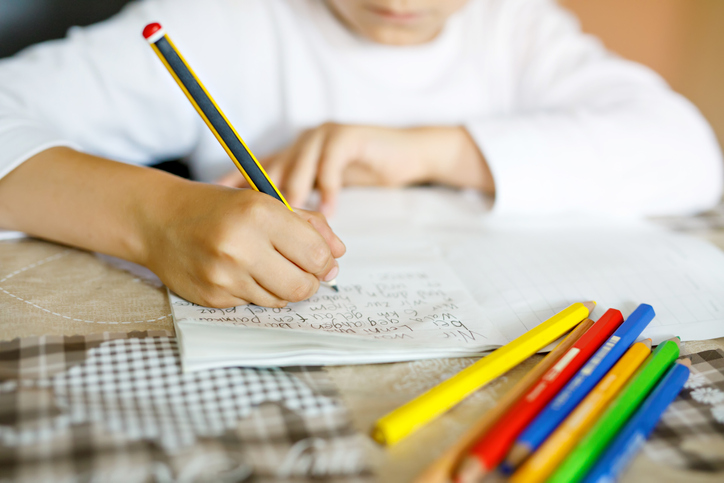Handwriting Skills For Back To School
September 15, 2022

It’s easy to take for granted when you’ve been doing it for your whole life, but it’s important to keep in mind that handwriting skills are learned and not natural. You should be keeping tabs on what kind of progress your child is making with both skills, and if they’re falling behind their peers, don’t panic! Allcare Therapy has occupational therapy services that can help them catch up and thrive at school.
Handwriting Skills
Handwriting is the culmination of a number of foundational skills, and if they haven’t been worked on repeatedly, it might be tough for your child to start writing with proper spacing and letter forming.
- Visual-Motor Integration: VMI are the skills that enable your hands to replicate what your eyes see. This is important when young children are learning to copy numbers and letters. A good way to work on this is to trace and draw shapes or simple drawings before letters are introduced. This can be done in sand, with chalk, or on paper.
- Fine Motor Skills: Many think that the proper pencil grip is paramount to good handwriting, but it’s not as important as you think–what’s more important is the dexterity and muscles it requires to make the small movements that form letters. Encourage your child early to play outside and be physical rather than swiping on screens all day to promote the growth and dexterity of their fingers!
- Spatial Perception: A common problem with many children’s handwriting is their spatial perception. This causes them to write letters too close or too far apart. You can work on these by using specially lined paper when they write at home, or working with Lego sets to follow instructions and build their spatial perceptual skills.
- Visual Perception: A child with visual perception issues may not be able to discriminate between letters such as “r,” “h,” and “n.” This results in many of their letters looking the same or using the incorrect letters in words. Encourage them to pay attention to things like items in picture books, play I Spy games when you’re out shopping or playing, and give them “spot the difference” activities to do.
- Directionality: Some children have problems with writing letters from left to right, and may periodically write words backwards or up and down. Play games with them at home that focus on directions, with words such as forwards, backwards, and up and down. Once they have a good sense of space, play games using left and right to help them establish the correct way to write words on paper.
Allcare Therapy’s Occupational Therapists have decades of experience in helping kids learn how to write so they can keep up with their peers in school. Contact us today to have us perform an analysis on where your child’s handwriting skills stand.